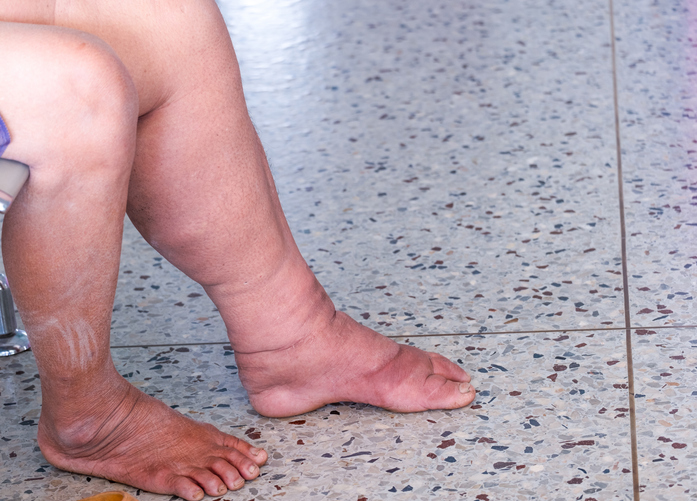Pain
What is Lymphedema?

The lymphatic system moves a colorless, watery fluid (lymph) throughout the body to help filter waste and fight off pathogens. Lymphedema develops when the lymphatic system is unable to adequately drain this fluid. Because it is not being properly drained, the fluid accumulates in the surrounding soft tissues, causing swelling and various other symptoms. Lymphedema can occur anywhere in the body but most commonly occurs in the arms and legs.
Types
Lymphedema is either primary or secondary.
- Primary lymphedema is hereditary, occurring independently of another cause.
- Secondary lymphedema develops as a result of a preceding disease or event. It is more common than primary lymphedema.
Symptoms
Symptoms of lymphedema range from mild to severe. Early signs of lymphedema include the following:
- Redness of the skin
- Less visible veins or tendons in the hands or feet
- Difference in the sizes of arms or legs
- Tight or difficult-to-bend joints
- Hardening or thickening of the skin (fibrosis)
Common symptoms of lymphedema include the following:
- Swelling or pitting edema of an arm, leg, or other parts of the body, including fingers and toes
- Feeling of heaviness or tightness in the affected area
- Relatively sudden snugness of jewelry or clothing
- Restricted range of motion
- Aching or discomfort
- Recurrent infections
- Burning or itching sensations
- Bleeding or leakage of lymph fluid from broken lymphatic vessels (lymphorrhea)
Causes
The causes of lymphedema are varied, depending on the type of lymphedema: primary or secondary.
Primary lymphedema
Primary lymphedema is inherited and can start at any age. Examples of primary lymphedema conditions include the following:
- Milroy’s disease, or congenital lymphedema, begins in infancy.
- Meige’s disease, or lymphedema praecox, develops around puberty up until age 35.
- Late-onset lymphedema, or lymphedema tarda, occurs after age 35.
Secondary lymphedema
Secondary lymphedema develops following a causative event or health condition. Some causes of secondary lymphedema include the following:
- Cancer and treatment for cancer
Lymphedema can develop when cancer cells invade, block, or damage lymphatic vessels or nodes. Treatments for cancer, such as chemotherapy, radiation and surgery, can inflame or lead to scarring of lymph vessels or nodes, causing lymphedema. Surgical removal of lymph nodes can also cause lymphedema. - Traumas
Crushing injuries, burns, or damage from surgery and surgical incisions can damage lymph vessels and nodes. Scar tissue and swelling can restrict the flow and drainage of lymph fluid. - Infection
Filariasis (a rare, tropical parasitic infection) can cause lymphedema. - Kidney disease
With kidney disease, the amount of excess fluid flushed from the body is reduced. This can cause fluid build-up in the body, leading to lymphedema. - Obesity
Excess fat can press down on the superficial lymphatic vessels and nodes, decreasing lymph drainage and causing swelling.
Risk factors
Factors that increase the risk of developing lymphedema include, but are not limited to, the following:
- Surgical removal of numerous lymph nodes
- Multiple surgeries in the same location
- Extensive surgery
- Cancer treatments, such as chemotherapy or radiation, especially if radiation covers a large area of the body
- Excess weight
- Increased age
- Rheumatoid arthritis or psoriatic arthritis













